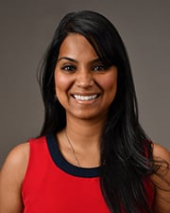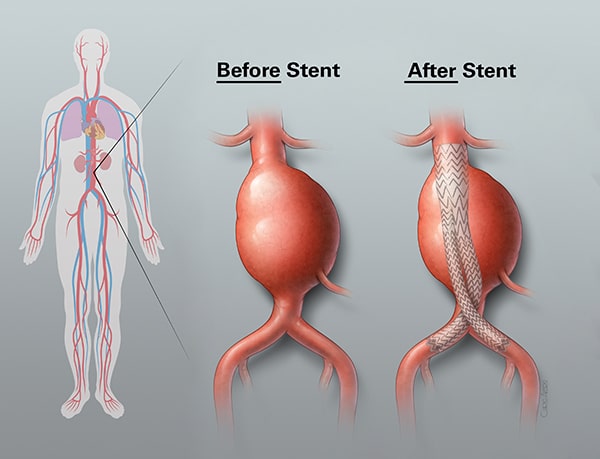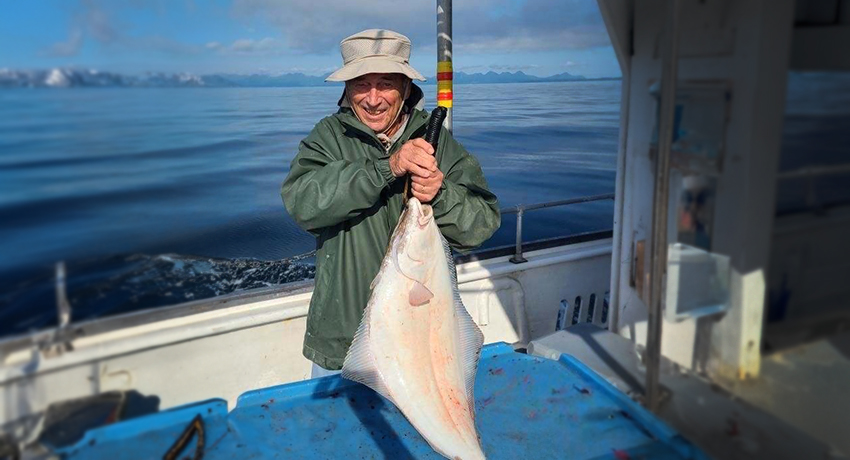Michael McDermott, 80, has never been one to slow down. In 2022, he was about to embark on a once-in-a-lifetime fishing trip to Kodiak, Alaska with three generations of family.
“We were set to go fishing,” he said. “I had it lined up with two of my sons, my grandson, a brother-in-law, and his son.”
The trip that took 10 months of planning was suddenly put in jeopardy when Michael learned an aneurysm below his kidneys was growing.
“When I found out it had increased in size and it was getting to the point of being dangerous, I was concerned,” he said.
Michael was referred to Sophia Khan, MD, a vascular surgeon with UT Physicians.
Infrarenal abdominal aortic aneurysm

“An aneurysm is the ballooning of an artery that weakens the wall of the artery. The bigger it becomes, the more likely it is to rupture,” said Khan, an assistant professor for the Department of Cardiothoracic and Vascular Surgery with McGovern Medical School at UTHealth Houston.
“For people who rupture their aneurysm, 50% make it to the hospital, and only 50% of those people who make it to the hospital survive,” she said.
Khan says Michael had an infrarenal abdominal aortic aneurysm, which means the aneurysm was in his aorta, the largest artery carrying blood from the heart to the rest of the body. Khan said it was located below his kidneys, and there was an annual 15% risk of rupture.
If it ruptured during a fishing trip off the coast of Alaska, Khan said there would be a high likelihood he wouldn’t make it.
Physician-patient relationship
“I think this story highlights the power of a physician-patient relationship,” said Khan. “We had an honest conversation. He planned this big trip and he trusted me when I said, ‘I’m going to do this and as long as there are no complications, you can go on your trip. But if there is even a small hiccup, you may have to cancel.’” It was only after agreeing to these terms that the two set a date for surgery.
Michael says he felt safe with Dr. Khan from the beginning.
“She was very nice and very easy to talk to,” Michael said. “She explained everything well to me, even drawing a map to show me the surgery.”
Endovascular aneurysm repair
Because they found Michael’s aneurysm at an early stage, Khan said he was eligible for a minimally invasive surgery called endovascular aneurysm repair (EVAR).
“We went up both femoral arteries from the groin with a small needle,” she said. “A catheter was threaded through the arteries up to the aneurysm. Then we slowly dilated that artery to put the stent graft inside. Once the graft was in place, we opened it up and it became the new wall for that small section of the artery.”

She says the stent graft, or synthetic tube, is hollow and the blood flows through it, relieving pressure against the aneurysm.
Michael’s surgery lasted about 90 minutes, and he was kept for 48 hours to monitor his hydration. Khan says most patients are discharged within 24-48 hours.
With this less invasive option, patients recover quickly and get back to doing what they love.
For Michael, it was getting out to sea.
“He had two little groin incisions, and he was well enough to go on his boat trip,” said Khan.
Aneurysm risks
The leading risk factor for developing an abdominal aortic aneurysm is smoking. Khan says there is an entire population of adults who are more susceptible to the condition because of popular tobacco use.
“There is a whole generation of people who didn’t know the dangers of smoking and viewed smoking as cool,” she said. “This isn’t a young person’s disease, you have to be a smoker for a really long time.”
Because the disease is so prevalent among older populations, her clinic offers screening for abdominal aortic aneurysms to anyone 65 years or older with a history of smoking, following guidance from the U.S. Preventive Services Task Force.
“The idea is we capture them early when they are suitable for an endovascular repair, which is less invasive,” she said. “If you miss aneurysms and they start to grow in size or they start to grow above the level of the kidney arteries, then it requires a much more difficult surgery.”
Back to living

In July 2022, just two weeks out from life-saving surgery, Michael was on a multi-stop journey, flying from Dubuque, IA to Chicago, IL to Anchorage, AK, and finally landing on Kodiak Island.
The trip he had been planning for nearly a year was a success.
“We got the fishing trip in,” he said. “I was up there for a whole week, and I never had any problems at all.”
He spent several days rocking on the waves of the Pacific Ocean, catching halibut, salmon, rockfish, and cod, with his family.
“It was special,” he said. “It was pretty nice to have the kids all together.”
“This case reminds me why physicians go into this,” said Khan. “Taking someone to surgery or taking care of them in the hospital is a huge honor. We as health care providers take on this surrogate role of guardian for these patients because, in many situations, we’re doing something for them that no one in their family could do. It is the greatest privilege to be able to do that for humankind.”



